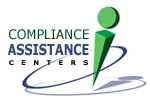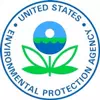Guide to JCAHO Environment of Care Standard 1.10.2
© 2005
Joint Commission on Accreditation of Healthcare Organizations.
Any use of any or all of the Joint Commission standards and
elements of performance beyond this particular tool is strictly
forbidden without the written permission of the Joint Commission. Citations from JCAHO standards are ©2005 Joint Commission on Accreditation of Healthcare Organizations. Any use of any or all of the Joint Commission standards and elements of performance beyond this particular tool is strictly forbidden without the written permission of the Joint Commission. These pages do not reflect any changes in the standards made after 2005. |
Please
note: this page is under development. Contact
(734) 995-7989,
if you have questions or suggestions.
Introduction Table of Contents Checklist for 1.10.2
|
Environment of Care Standard 1.10: The organization manages safety risks. Element of Performance 2: Safety Processes Plan. The hospital develops and maintains a written management plan describing the processes it implements to effectively mange the environmental safety of patients, staff and other people coming to the hospital's facilities. |
Assessing need for and procuring permits for boilers, incinerators, generators, autoclaves and sterilizers 40 CFR 70). Management of- and training for- removal of refrigerants from air conditioning systems (40 CFR 82). |
|
Minimizing the use of diesel. Eliminating the use of incinerators. Eliminating the use of ethylene oxide. Policy preferring the purchase of energy efficient equipment and vehicles. |
Identification, assessing need for abatement and disposal (40 CFR 150). |
|
Minimizing the use of asbestos-containing materials to the extent possible. |
Employee safety, hazard identification, personal protective equipment, spill clean-up, hazardous waste evaluation and disposal. (29 CFR 1900, 40 CFR 261-262). |
|
Tight inventory control to minimize waste. Safe work procedures to minimize spills, splashes and sprays. |
Employee safety, hazard identification, community safety and security, personal protective equipment, spill clean up and employee training (29 CFR 1910, 49 CFR 172). |
Hazardous Materials & Waste
Identification of and eliminating and/or reducing toxic chemicals and pharmaceuticals where practicable. Purchasing procedures that request the least hazardous product available. Reducing hazardous waste generator size. Eliminating aerosol cans. Recycling solvents, alcohols and formalin. |
Hazardous Waste Identification, Management, Treatment and Disposal
Employee training, waste identification, storage, labeling, spill clean up, community safety and security, transporting and disposal, (40 CFR 261-262). |
Stewardship of resources and sustainability as a means of protecting the health of communities served Environmental Management System (EMS) is in place or Facility is ISO 14001 is certified or qualified. Purchasing procedures that prefer environmentally preferable products Safety Coordinator and Committee have committed resources for appropriate environmental management and waste reduction strategies. |
Patient and employee protection, pesticide selection, use, disposal, community safety and security, and pesticide applicator licenses (EC 1.10.4, 40 CFR 171, 40 CFR 152, 40 CFR 162). |
|
Integrated pest management policy The use of xeriscaping (native plantings) to minimize pesticide use. |
Petroleum Products, Above- and Under-ground Tanks
Assessment of petroleum product use and storage and applicability of tank rules and Spill Control and Countermeasures planning (40 CFR 112,280). |
|
Minimizing the use of petroleum with energy efficient appliances, equipment and vehicles. Minimizing the use of tanks to reduce spill and leak risk. Re-refining used oil rather than burning. |
Polychlorinated Biphenyls (PCB)
Identification,
storage, labeling, management, spill clean –up and
disposal of PCB oil or PCB containing equipment. |
Radioactive Materials and Waste
Identification, storage, labeling, management, protective equipment , exposure monitoring, spill clean –up and disposal of radioactive materials and waste. |
|
Substitution of non-radioactive methods, e.g. clinical laboratory. Use of low-level radioactive materials. |
Regulated Medical (Infectious) Waste
Employee training, identification, proper segregation, storage, labeling, management, spill clean-up and disposal of regulated medical (infectious) waste (State infectious waste rules, 29 CFR 1910. 1030). |
|
Minimizing RMW generation through use of reusable items and improved segregation. Non-incineration technologies for disposal of RMW. Minimizing or eliminating the use of poly vinyl chloride-containing products. |
Has training and experience in environmental management and pollution prevention Safety Committee looks at environmental issues to improve safety. |
Waste minimization procedures for paper, plastic and cardboard. Recycling of waste materials. |
Universal Waste (define in Glossary)
Identification, storage, labeling, management, spill clean –up, disposal and employee training for Universal Waste (40 CFR 273). |
|
Elimination of mercury. Use of energy efficient light bulbs. Use of rechargeable equipment and batteries. |
Identification,
storage, labeling, management, spill clean –up and
disposal for used oil and used oil filters (40 CFR
279). |
Notification, identification, training and testing and permits for wastewater discharges (40 CFR 403). |
|
Minimization
of discharges to sewer. |



